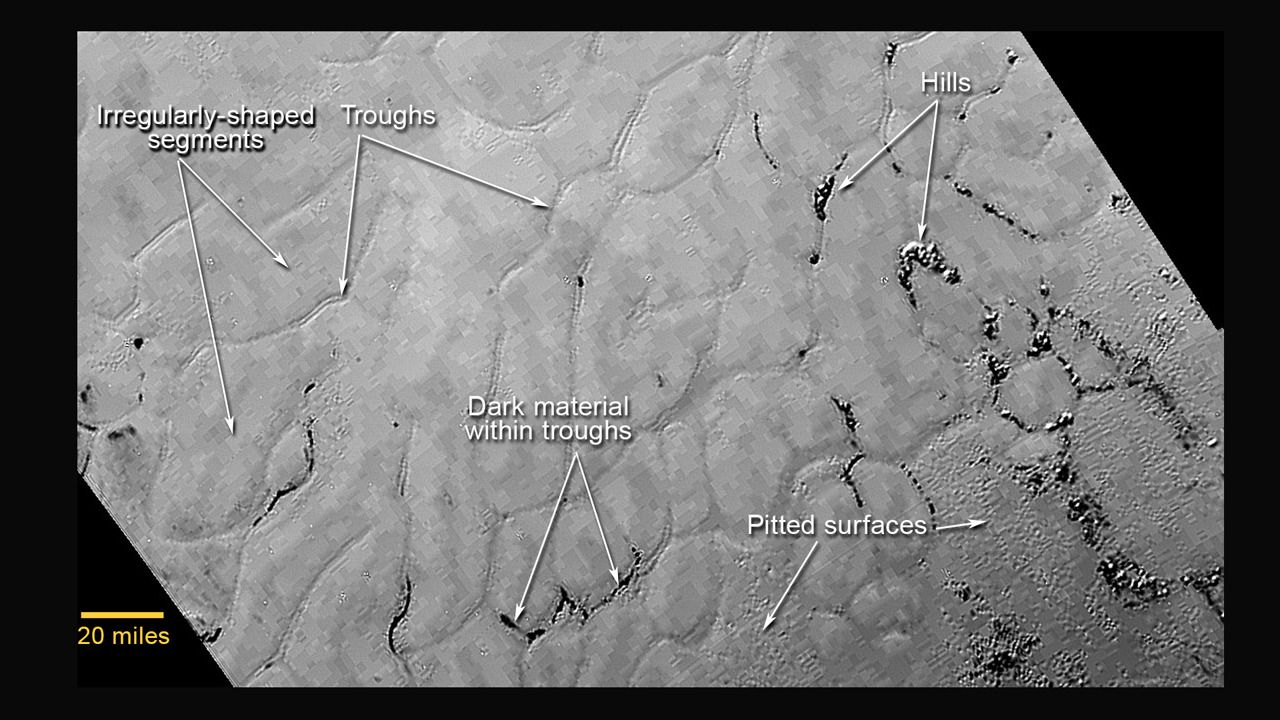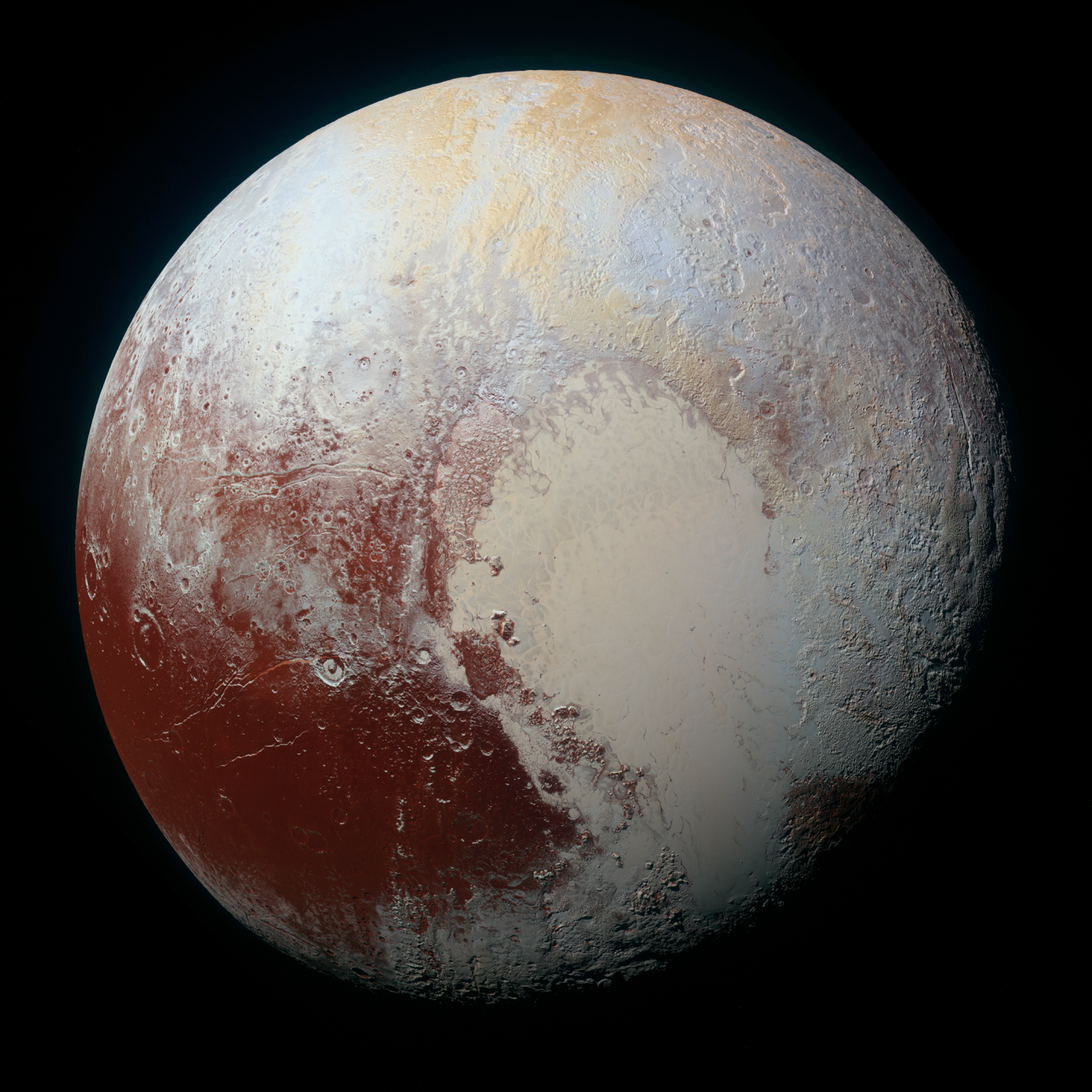An image captured by New Horizons around 16 hours before the closest approach displays Pluto’s heart. This stunning image of one of the planet’s most dominant features shows us that the heart’s diameter is about the same distance as from Denver to Chicago. This image also showed us that Pluto is a complex world with incredible geological diversity.
Pluto’s vast icy plain, informally called Sputnik Planum, resembles frozen mud cracks on Earth. It has a broken surface of irregularly-shaped segments, bordered by what appear to be shallow troughs. In other areas, the surface appears to be etched by fields of small pits that may have formed by a process called sublimation, which is when ice turns directly from solid to gas, just as dry ice does on Earth.
Majestic Mountains
Images from the spacecraft display chaotically jumbled mountains that only add to the complexity of Pluto’s geography. The rugged, icy mountains are as tall as 11,000 feet high.
This high-resolution enhanced color view of Pluto combines blue-red, and infrared images taken by the New Horizons spacecraft. The surface of the dwarf planet has a remarkable range of subtle color variations. Many landforms have their own distinct colors, telling a complex geological and climatological story of the planet.
Foggy Haze and Blue Atmosphere
Images returned from the New Horizons spacecraft have also revealed that Pluto’s global atmospheric haze has many more layers than scientists realized. The haze even creates a twilight effect that softly illuminates nightside terrain near sunset, which makes them visible to the cameras aboard the spacecraft. Pluto’s atmosphere after the image returned from New Horizons showed that Pluto’s hazes are blue. The haze particles themselves are likely gray or red, but the way they scatter blue light has created this tint.
Water Ice
New Horizons has detected numerous small, exposed regions of water ice on Pluto. Scientists are eager to understand why water appears exactly where it does, and not in other places.









0 Comments